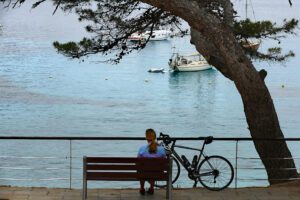In this complete travel guide to Spain, I’m supplying you with all the basic information as well as some tips and hacks that will make your travel to the eastern part of the Iberian Peninsula smoother and therefore even more enjoyable.

Where To Go, Where To Go?
After the outbreak of Covid, we travel addicts were all facing the same problem: Where can we go? International travel became quite complicated and some overseas destinations were temporarily out of reach.
I’m based in Europe. Therefore, my plan has always been to tick off the long-distance boxes first. I wanted to visit other continents while I was still in the bloom of my somewhat advanced youth. I wanted to deal with long-haul flights, sweltering heat, bugs, and other globetrotter hardships while I was still full of sap.
As Covid kinda accelerated my aging process and downsized my travel radius, prematurely Spain came into focus.
After having spent a fantastic week on the Balearic island of Mallorca, I fell head over heels in love with Spain. Therefore, my next trip was designed to finally enjoy sherry wine, flamenco, and the cultural treasures that history had left behind on the Spanish mainland. A couple of weeks later, I added some amazing Island Hopping in the Canary Islands to the mix.
Spain
Spain shares the Iberian Peninsula with Portugal. Once a colonial oppressor world power with colonies in the Americas and the Philippines, the country was facing challenging times of civil war and fascism in the 20th century.
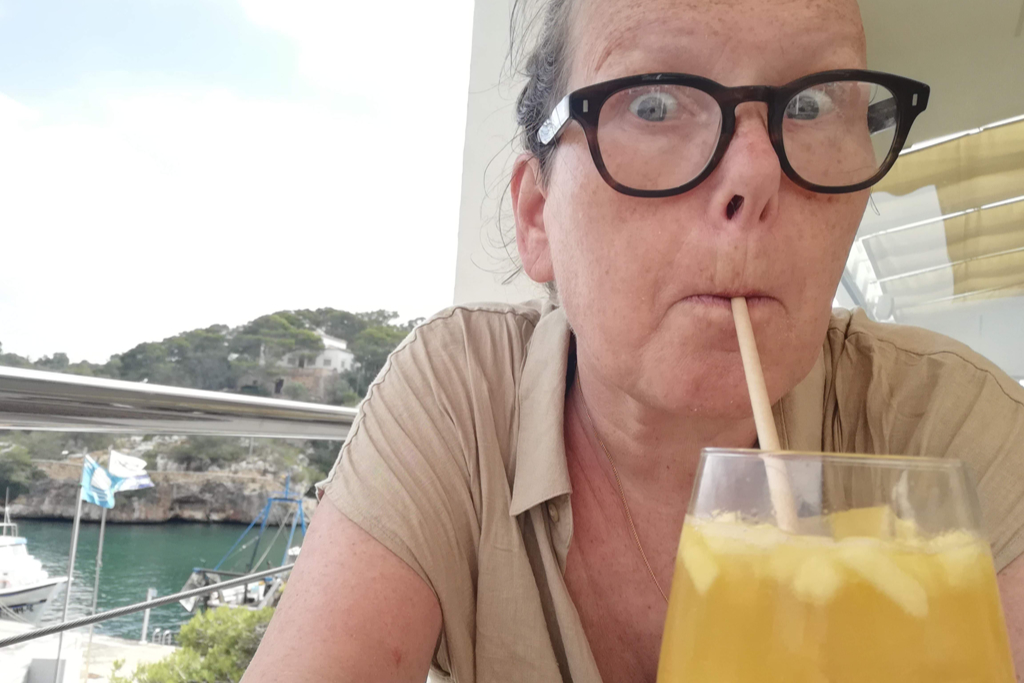
Yet, especially the Balearic Islands in the Mediterranean and the Canaries in the Atlantic off the west coast of Africa have been a tourist magnet since the 1970s.
So for me, it was time to discover the real Spain far from cheezy stereotypes. In my posts, I’m sharing with you all the treasures big and small that I’ve found during those trips.
Spain’s History in a Nutshell
In the 11th century BC, Phoenicians settled on Spain’s south coast.
In the Second Punic War, Roman troops reached the peninsula for the first time. They occupied the west and south quickly. However, it took them 200 years to get also the North under their rule.
As a matter of fact, the name España derives from the Roman name Hispania.

Eventually, the Visigoths extended their empire from southwest Gaul to the Iberian Peninsula.
From The Moors To The Reconquista
In the early 8th century, the Moors overpowered the Visigoths. They governed the countries on the Iberian Peninsula for centuries and established their culture, architecture, and language. This cultural heritage is undeniably present to this date. Yet, the Moors did not succeed in establishing themselves permanently.
The Christian Reconquista began already in the early 8th century. Although it wasn’t continuous, the process lasted over several centuries. The Christian empires gradually pushed back the Moorish dominance. Finally, the last Moorish state disappeared with the fall of Granada in 1492.

The Catholic Kings Isabella I of Castile and Ferdinand II of Aragón immediately began to persecute religious minorities such as Muslims and Jews. Their fellow brethren were forced to be baptized. During the infamous Spanish Inquisition, alleged unbelievers who secretly kept on practicing their non-Christian faith were severely punished.
In 1492, the Catholic Kings issued the Alhambra Edict. According to this decree, Spain’s remaining unbaptized 300,000 Jews had to leave the Kingdoms of Castile and Aragon. Later, in 1609, King Philip III. also expelled the so-called Moriscos, descendants of Moors who had converted to Christianity.
Colonial Era
With the discovery of America by Christopher Columbus in 1492, Spain temporarily rose to Christian world power. By 1600, the colonial masters ruled over large parts of South and Central America, the South of today’s USA, and the Philippines.
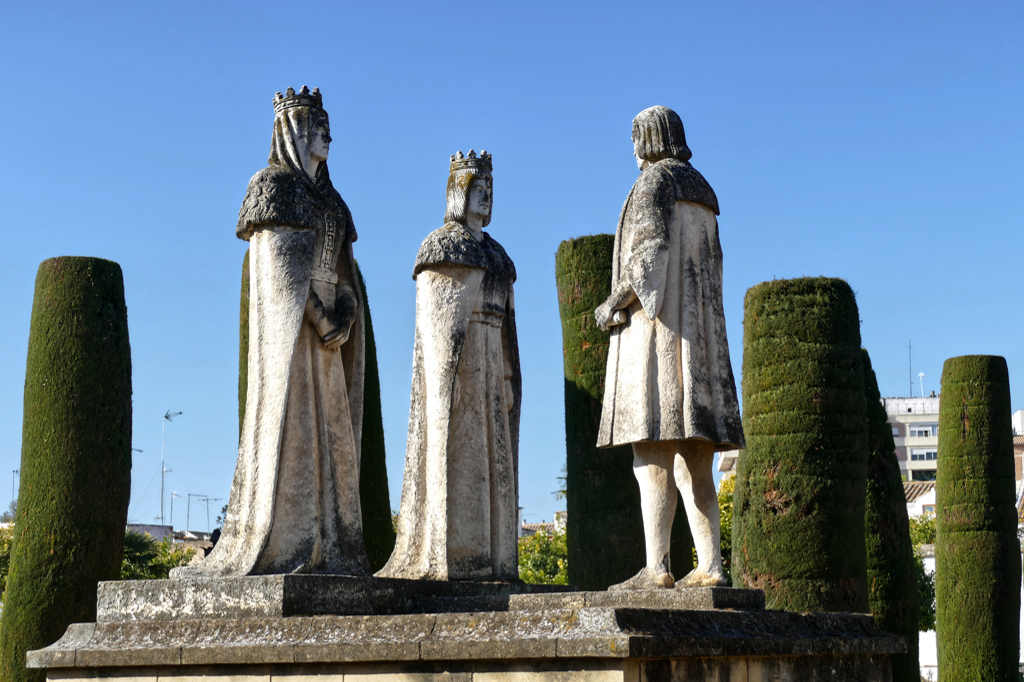
The Spanish-American War ended the colonial hegemony in 1898. Yet, Spain’s African colonies Spanish Morocco, Spanish Sahara, and Equatorial Guinea achieved their independence only in the 20th century.
Second Republic, Civil War, And Franco’s Dictatorship
In 1931, Spain became a republic. However, political and social conflicts weighed on the so-called Second Republic from the very beginning. The radical left and as well as the extreme right fueled the political instability. In 1936, parts of the military guided by the fascist general Francisco Franco carried out a putsch against the government. However, this coup was successful in only some parts of the country. It failed in the country’s most significant political and industrial centers. Ultimately, this division led to the Spanish civil war.
Tragically, the putschists got support from fascist Italy and Nazi Germany. Despite this support, Spain did not provide military aid to its allies in return. Nevertheless, most of the people who had fled Nazi Germany to Spain were interned in Spanish concentration camps.
The fact that France and Great Britain didn’t interfere basically facilitated Franco’s advance. Hence, in 1939, the civil war ended with the victory of Franco’s fascist troops. A long-lasting violent and cruel dictatorship began.
Spain Today
In 1947, Franco resurrected the monarchy. He appointed Juan Carlos I as his successor as head of state in 1969. After the dictator’s death in 1975, the country began a process of democratization. Spain became a parliamentary monarchy in 1978. During the 1980s, the country joined the European Union as well as NATO. Since 2015, Felipe VI. has been King.

The country is structured into 17 autonomous communities. The capital and largest city is Madrid, other important metropoles are Barcelona, Valencia, Seville, Bilbao, Zaragoza, and Málaga.
Note: If you are a history teacher, you might find this outline somewhat simplified. It is. Also, my personal political opinion might shine through. Since this is mainly a travel post, the historical and political info is basic and in places not complete.
When In Spain, Do As…
There are a couple of things you should know about the everyday Spanish ways. Even if you’ve visited other European countries, there are some peculiarities you’ll find typically in South European countries. Also, you’ll experience certain quirks almost exclusively in Spain.
As a matter of fact, contrary to for instance Japan, there aren’t rules that are really crucial. However, keeping the following in mind will strongly facilitate your interactions with locals. As Spaniards are very cordial and open, you might even create some friendships on the way.
Enthusiasm And Cordiality
In general, Spaniards greet each other very differently than most of the rest of Europe. In Spain, a greeting is far more tactile. Also, kissing each other on both cheeks is totally normal. By the way, even among people who were just introduced to each other for instance at a party.
A big exception to this rule is the business environment. If you apply for a job, you certainly do not kiss the interviewer.
Nevertheless, meeting’n’greeting is always very friendly and extremely open.
If you are familiar with the Spanish language, you know that there are formal and informal forms of addressing people. The formal is Usted, the informal tu. In most Latin American countries people use almost exclusively the formal kind – even as they address small kids. In Spain, however, people hardly ever use this form. Even older ladies like myself are addressed with tu in stores and bars. For people from certain countries such as France or Germany, it’s something to get used to. We are used to being addressed formally during first encounters and in public places.
The Opposite of Disrespect
Apart from approaching basically everyone with an informal tu, Spaniards also tend to call each other by pet names. In other countries, this would be considered flattering and flirtatious – and definitely inappropriate. In Spain, however, there’s no need to feel uncomfortable as total strangers call you mi reina, my queen, guapa, beautiful, or even mi amor, my love, and mi vida, my life. There are probably another couple of dozens of nicknames I forgot to list. But don’t worry, you’ll hear them all. From men. Also, from women. And it will only be a sign of friendliness.
On the other hand, based on their mostly extroverted ways, Spanish people might come across as a bit rude. While in other parts of the world, people always add please when ordering, Spaniards don’t do it necessarily when in an informal setting.
In Spain, they dress to impress. Although Spaniards are not as over the top as for instance Latin Americans when it comes to formal clothing, they are certainly rather formal than casual. Big hair, lots of make-up, glitter’n’glam are found more often in Spanish fiestas than in northern Europe.
Also in the business world, people dress very formally.
Volume
In Summer 2021, I broke a leg in a gorge on the Spanish island of Gran Canaria. With a bone sticking out above my left ankle, I was laying in the middle of nowhere. Sadly, I had no connection whatsoever. By pure luck, I was saved hours later and brought to a hospital.
While the medical attendance was perfect, I suffered from the cultural difference reflected in the volume. The volume of voices, of devices, of all kinds of noises. Nurses were banging chairs and doors. Some patients were yelling into phones put on speaker. Others were watching soccer or listening to music not using headphones. There was a constant cacophony.
But I was the only one who seemed to mind or even care.
A gentleman was shouting into his phone right in front of our door for hours. As I asked the nurse to please close the door or ask him to keep it down, she told me with notable indignation “I can’t do that! This is a hospital!” Exactly my point. Totally agreed. Only, her conclusion was that people had the right to be tumultuous, mine was that I could demand rest’n’quiet.
Is Silence Golden?
This little anecdote shows you that Spaniards have a very relaxed attitude towards ear-splitting hubbub and commotion.
People are talking as loudly as they believe is necessary. They watch movies with the volume cranked to the top on buses and in subways. They yell into phones on speaker in stores, and they are having heated discussions on the street. It doesn’t even occur to them they might disturb someone with their noise. Because they don’t. I have the impression that Spanish people don’t even realize how noisy everyone around them really is. Or how loud they are.
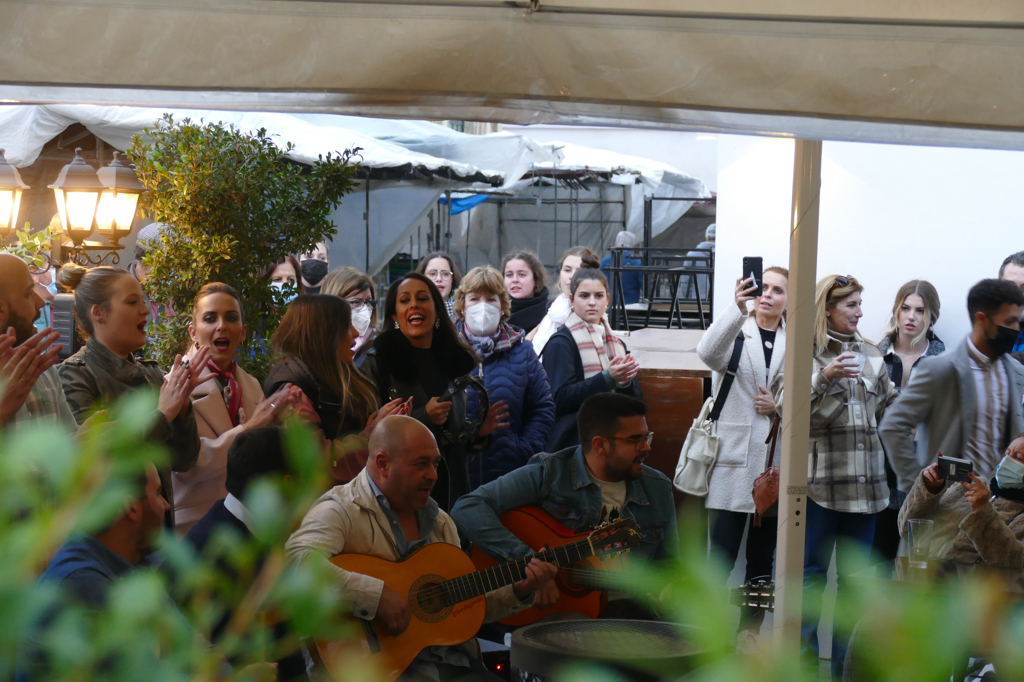
I would still argue that at a hospital, silence is golden. On the other hand, at bars and in restaurants, some pleasant noise just underlines the Mediterranean joy of life.
As a matter of fact, hush is a rare occurrence during a Spanish meal.
Feeling Like a Wallflower
This, by the way, brings me to another aspect of dining in Spain.
I’m a solo traveller. Although I had a wonderful time in Spain and everyone treated me nicely, travelling by myself had a big downside.
Most of the time, Spaniards are going out to dine in large crowds. Whether it’s families or their posse, they come in groups of at least eight and occupy large tables.
Obviously, restaurants are prepared for that. Therefore, it’s not always easy to get a table when you are by yourself. Especially the old traditional eateries have maybe one small table if any at all. Therefore, they are not always able – and happy – to accommodate a single eater. Also, stuffing face by yourself feels a bit autistic while around you, the other party’s parties are just rockin’.
Nevertheless, there are many advantages to solo travel, I put them together in my post solo travel – PROs and CONs.
Culture, Customs, and Traditions
Spain has a rich culture that was composed and nurtured by the country’s ever-changing history. Obviously, there is the grand Mudejar architecture, influenced by the Moorish past. There are world-famous writers like Miguel de Cervantes, the intellectual father of Don Quixote. Last but not least, Baroque painters like Velázquez and Zurbarán are found in collections all over the world.
But Spain has also some unique national customs and arts. You’ll encounter them notably in Andalusia – to this date the country’s most traditional region.
Bullfighting
Bullfighting is an iconic Spanish tradition – which, to me, doesn’t make it okay. However, according to its fans, it is a refined and aesthetic art.

Yet, many critics consider bullfighting an archaic and brutal practice. They argue that due to the indisputable animal cruelty it should not be continued in its current form.
After all, bullfighting is already banned in both the Canary Islands and Catalonia. In Andalusia, however, it lives on and can be witnessed especially during local Ferias.
Flamenco
Flamenco as an art genre has become world-famous since the 19th century. It is far more than the cliché of proud dancers in polka-dotted dresses, stomping and shouting Olé. Actually, it’s a complex way of performing. There is a masterful interaction of percussions, guitar, soulful singing, rhythmic handclapping, and, yes, abandoned stomping and Olé-shouting.
Many Roma have left their artistic trace in the Spanish music scene. They have made particularly the genre Flamenco world-famous. Approximately 750,000 Roma, hence, so-called Gitanos, are one of the country’s largest minorities. They immigrated to Spain in the 16th century. Although much less discriminated against than in Eastern and Southeastern Europe, outside the music and art scene, they are still marginalized.
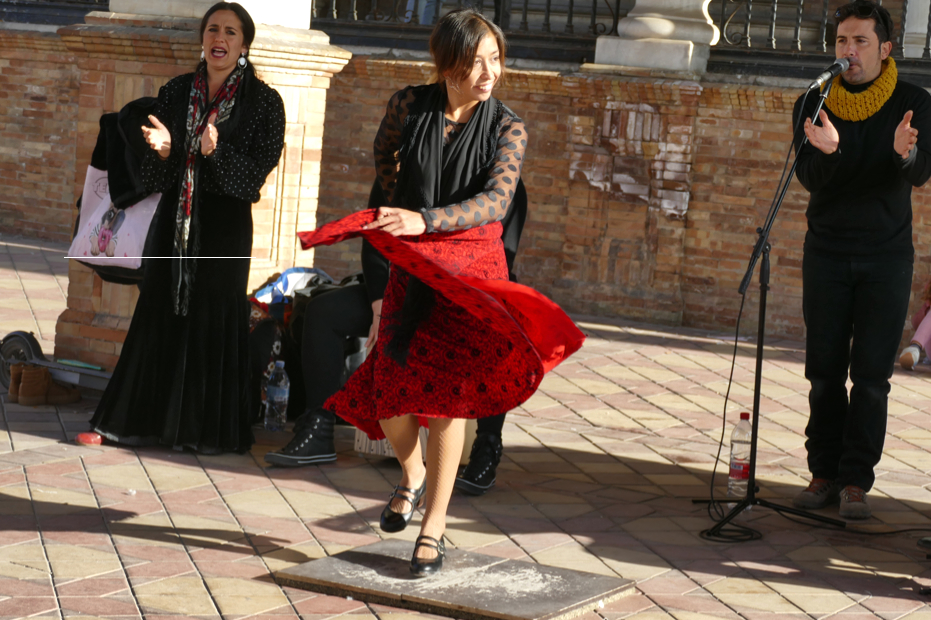
In the 19th century, the interest in traditional Spanish grew significantly in the course of the European Romanticism movement. Visitors such as poets and journalists from Europe and the USA promoted the image of this art across the world.
However, only in 2010, Flamenco has made it onto the list of Intangible Cultural Heritage of UNESCO. In 2014, the Junta de Andalucía decided to include Flamenco in the curriculum of public schools. This only proves how deeply this art is rooted in the regional culture.
Horses Pura Raza Española
The breed Pura Raza Española, the Pure Spanish Breed, is also known as Carthusian and Andalusian. The latter term stems from the flourishing horse breeding during the Moorish era in the so-called Al-Andalus. Although important centers of Spanish horse breeding are still located in this very region, this breed can be found also in other places.
Andalusian are noble horses. Since they are rather docile and sensitive, they show a special aptitude for training. Moving in an elegant manner, they also have a great jumping ability. Due to their sensibility, they are often so-called one-man horses, hence, they tend to get attached to one particular person.

When visiting Andalusia, you’ll certainly have the chance to visit a horse show. The most famous one is probably the Fundación Real Escuela Andaluza Del Arte Ecuestre. I’ve introduced this institution in my post on Jerez de la Frontera. This school preserves various forms of traditional dressage of the famous Carthusian horses. The prestige and reputation of their show Cómo bailan los Caballos Andaluces have been celebrated for years.
Practical Information
How to Get There And Around
Plane
As I pointed out above, Spain and mainly its islands have been touristy hotspots for decades. Consequently, there is a really amazing infrastructure. Even smaller cities have at least one international airport with tons of flights to and from all over the world. The largest one is at the capital Madrid, followed by Barcelona, Palma de Mallorca, and Málaga.
Apart from regular flights, there are many charter companies as well as low-cost airlines serving basically all Spanish airports. Paying as little as 15 €uros for an international European flight might be great for your wallet. Nevertheless, it’s an ecological catastrophe. Although that’s a topic for a different post, you might want to think about that for a minute, anyway.

Usually, airports are just a couple of kilometers from the city center. If you don’t have too much luggage, you’ll probably be able to get downtown quickly and cheaply by bus or train. You’ll find extensive information on all these travel options in my individual posts on Spanish cities.
Long-Distance Bus
Travelling by long-distance buses is getting really popular in Europe. The cheap prices make up for the little loss of time compared to trains. And since various companies are competing, the service is usually very reliable.
Spain lies a bit secluded on a peninsula. Also, as low-cost flights are plenty, not many visitors choose a commercial bus to get into the country.
Yet, getting for instance from Paris to Barcelona or Madrid by flixbus takes about 15 hours and can cost as little as 19 €uros.

While international bus trips aren’t as popular, taking buses between cities is a reliable and most importantly the cheapest way of travel. Whether you choose ALSA, Avanza, Socibus, or any other national bus company, you’ll most likely find a but that takes you there in a comfortable way.
Surprisingly, on some Spanish islands like Mallorca or Gran Canaria, the net of public transport is amazing. On others such as Fuerteventura, it’s far less comprehensive, and on Lanzarote even almost non-existent. Either way, since I’m not driving, I always keep you updated on public transportation in the posts on individual destinations.
Train
Taking a train to continental Spain is not impossible, but it certainly takes a while. A train ride from Paris to Barcelona takes about 7 hours, a trip from Brussels to Seville around 16. Also, those trips are sadly far more expensive than plane tickets. Hence, I do understand if you neglect the ecological aspect of travelling.
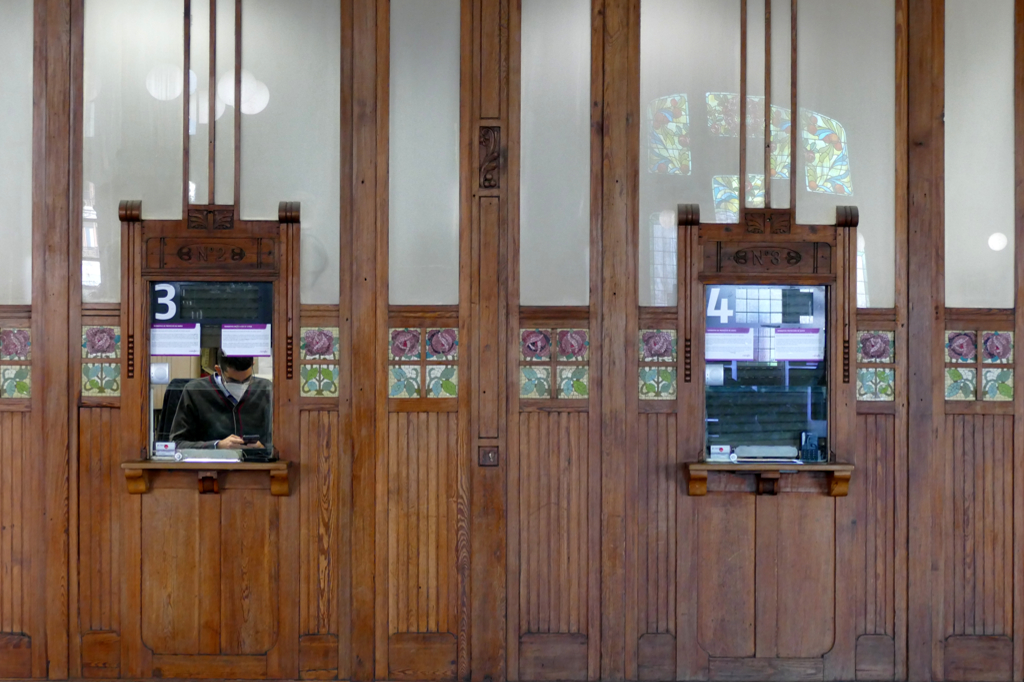
Nevertheless, travelling by train within the country is a great option. The national railway company RENFE operates trains on about 12,000 kilometers of rails. There are different types. Regional and commuter trains are quite cheap. Taking the modern and comfortable high-speed trains AVE, however, costs you at least as much as a domestic flight.
To check out connections and prices and to book your ticket, go to the RENFE‘s website.
Ferry
Most visitors are getting to the Spanish islands by plane, obviously. However, it is absolutely possible to get there by ferry. Also, travelling by ferries between the individual Balearic islands respectively the Canaries is very common, albeit not really cheap. You should also note that some islands don’t even have an airport.
Obviously, there are also ferry connections from the European mainland, for instance from Barcelona to Alcúdia on the northern tip of Mallorca. From Cádiz and Huelva, you can go to some of the Canary Islands such as Gran Canaria and Tenerife.
This is the only way of taking your own car to the islands. However, if you are rather into slow travel, taking the ferry is a valid option, too.
Urban Public Transportation
As in basically every European country, there is a comprehensive network of public transportation in every larger city in Spain.
Usually, there are no fixed timetables. Yet, at major bus stops screens are showing the arrival of the next buses. Also, you can get this information on respective Apps and, of course, on google maps. However, most of the time, buses are plenty so that you do not need to be nervous to get stuck.

Urban bus rides are relatively inexpensive in Spain. Mostly it’s less than 1.50 €uros per trip. In addition, there are passes for multiple rides, so-called bonos. As you buy ten rides, you save at least 30 percent. This makes travelling by bus really dirt cheap. Some big cities like Barcelona, Valencia, and Seville offer special day passes for tourists. Using those, you can travel for a small flat rate as much as you wish. A multi-trip card is also included in certain tourist passes in Barcelona, Valencia, and Granada.
What’s really lovely about public transport in Spain is that passengers give up their seats for others who need them more. And they do it without being asked to do so. On the contrary, I’ve witnessed situations where older or handicapped people were literally urged to accept the offered seat.
Where to Stay
Spain has been a popular tourist destination for ages. Therefore, you’ll find at least a small choice of lodging options even in the tiniest places. In some of the tourism-wise less important towns, you won’t find big hotels catering to international guests. However, there will always be a smaller guesthouse or privately rented apartments. There, in general, the hosts will get out of their way to make you feel comfortable.

I recommend accommodations for certain places in the individual posts. Here is a search box that will help you book places to stay across the country*:
Booking.comWhat to Eat
Spain is gifted with an abundance of juicy citrus fruits and rivers of the finest olive oil. There is the world-famous pork cerdo Iberico as well as fish fresh out of the sea. Consequently, the cuisine is excellent.

After all, Mediterranean cuisine was inscribed in the List of the Intangible Cultural Heritage of UNESCO in 2013. Yet, here are some tips on what you should look for in restaurants and markets around the country.
Tapas and Menú del Día
I’ve heard that in Madrid alone are more bars than in all of Norway. And while I don’t know if that’s really true, there sure is an overwhelming number of bars and restaurants. There, you can enjoy a glass of beer or wine with some tapas, varied small snacks. They can be slices of serrano ham, diced cheese, olives, small sandwiches – you name it.
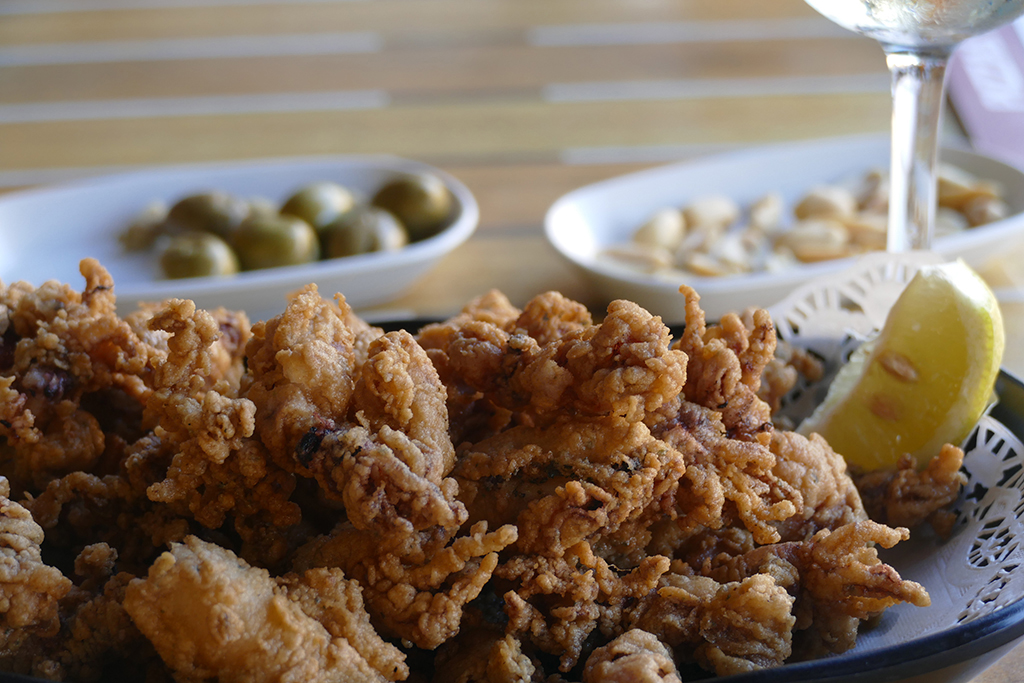
Normally, you’ll get some small complimentary tapas with your drink – at least olives or peanuts. A selection of two or three tapas can actually replace a meal. However, you can also order a ración, hence, a serving, or a media ración, a half-sized serving.
When you are really hungry, the menú del día might do. It’s usually a three-course meal. You can combine it to your liking from different starters, main courses, and dessert options. Often, the price of around 10 €uros includes water or even wine. However, the menú del día is usually just a lunch option.
As in most other European countries, tipping is rather optional in Spain. It is not compulsory, but an appreciative gesture. Also, you don’t need to calculate a certain percentage. Rounding up to the next full €uro might be a bit chintzy. However, adding one or two €uros will normally do.
Bakeries and Delis
There are many small bakeries and delis selling all kinds of sandwiches and empanadas. Empanadas are small pies stuffed with all kinds of delicious fillings like meats, cheese, and vegetables. They make a handy snack to go.

If you have a sweet tooth, you’ll also find a great variety of delicious pastries. Therefore, if your hotel does not offer any breakfast, just enjoy your morning coffee at one of the many bakeries, rubbing shoulders with the locals.
Markets and Supermarkets
Just like in Italy, most Spanish supermarkets have a food counter. Here you can buy simple dishes like grilled chicken, meatballs, and fritters as well as sides like potatoes and salads. At some supermarkets, they even sell some really good Paella or Fideuá. Latter is basically Paella, but made with noodles.
I’m not claiming that this will be the fanciest meal of your life. Nevertheless, if you just need to grab a filling snack, I find it’s a valid option. Also, it’s a truly Spanish experience since it’s definitely not a touristy dining place.
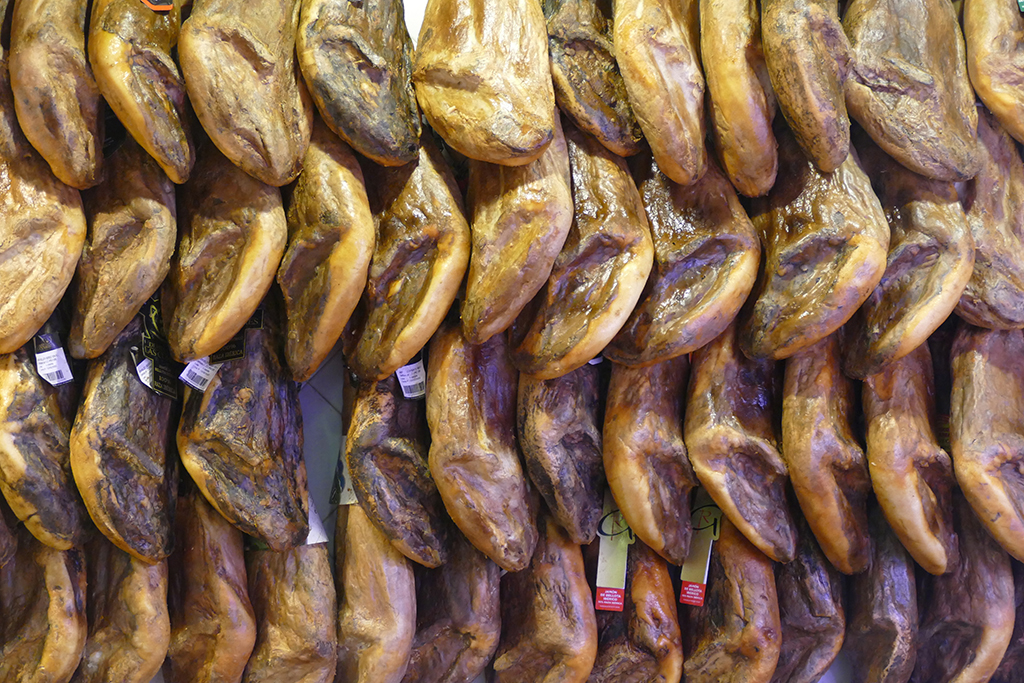
Most of Spain’s big, often covered farmers’ markets offer far more than just amazing fruits, veggies, cold cuts, and cheeses. They are also counters where you can enjoy a coffee or even a light wine along with a delicious snack.
You definitely should not miss out on this authentic experience.
When to Eat
Now, Spanish mealtimes can be challenging.
Years ago, I visited the Costa de la Luz together with my then 7-year-old daughter. We were used to northern European mealtimes and had to find tricks to avoid going hungry. Not only are classic mealtimes much later than expected. In addition, many restaurants close their kitchens’n’doors in-between. For instance, our favorite pizzeria in Conil de la Frontera re-opened only at 10 p.m. By then, we were starved.
To survive, we developed a distinct schedule by making Spanish lunch hours our dinner time. I kid you not. Around 4.30 p.m., shortly before restaurants closed to re-open only late at night, we went for dinners. Admittedly extremely early dinners.
By the way, I’ve written an entire post about travelling in the company of kids – especially as a solo parent.
Standard Meal Times
So what are the average mealtimes in Spain? Well, as a rule of thumb, breakfast is between 7 a.m. and 9 a.m. However, it often is just some coffee with or without milk. The second breakfast is then eaten between 10 a.m. and 11 a.m. This can be another coffee, but now accompanied by a pastry or a sandwich. My personal favorite, however, is a tostada sprinkled with olive oil and grated tomato.

Lunch is served relatively late between 2 p.m. and 4 p.m. In the mid-afternoon, there is a merienda, another sweet or hearty snack. Finally, dinner is served between 9 p.m. and 11 p.m. to those who are still up by then.
Note that although many restaurants are opening for the evening shift around 7 p.m., their kitchen might open one or two hours later. Until then, they only serve drinks and cold tapas.
Cash and Cards
Until now, 20 European countries replaced their former local currency with the €uro starting in 2002. Obviously, Spain is one of them. The exchange rate is 1 US$ = 0.94 EUR as of December 2023. However, you can check today’s conversion rate on this page.
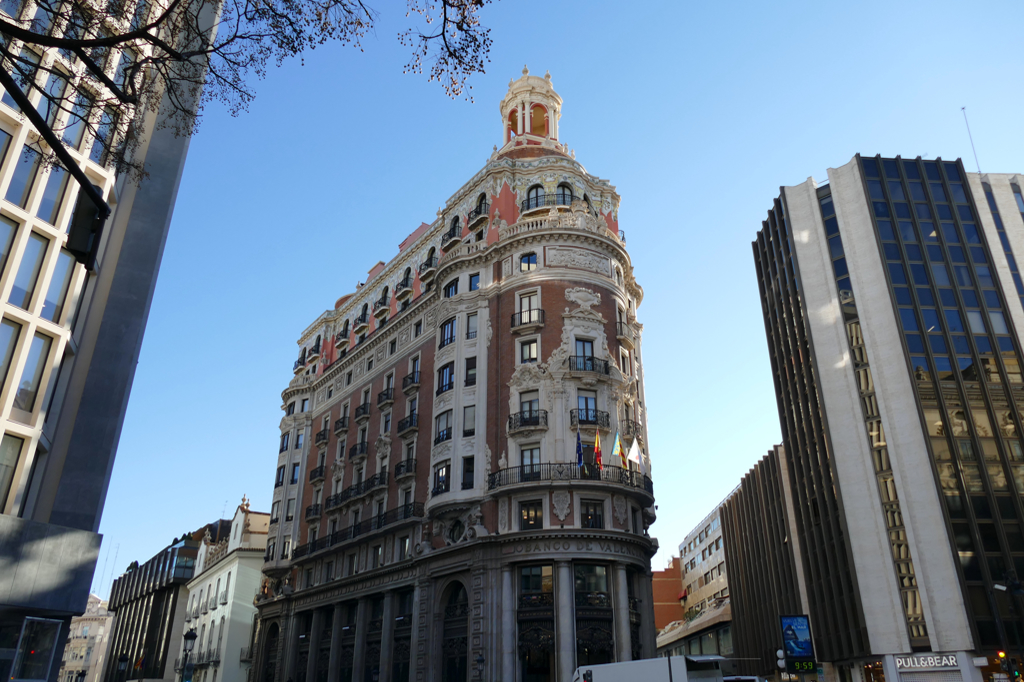
Especially due to the COVID-19 pandemic, even small businesses prefer that you pay by credit card, and preferably contactless. I could have done my entire trips to Spain without spending basically any cash.
Tourist Passes
In a touristy country like Spain, many communities offer passes that grant discounted or free access to museums and landmarks. Often, discounts at restaurants and shops or even hotels are included. Usually, there is also an option to add free use of public transportation.
In some cities like Brussels or Copenhagen, this kind of pass is a fantastic way of saving lots of money. According to my experience, this is not the case in Spain. You really have to decide beforehand what you want to see and then you need to do the maths.
Do The Math
These passes are quite pricey. Therefore, if you don’t organize your sightseeing smartly, you’ll be lucky if you reach break-even. I think that in some cities, I even paid a bit more for the pass than what the attractions had cost me. This was particularly the case in Barcelona. There, the most popular landmarks like the famous Gaudí-buildings aren’t even included in the Barcelona Card. Also, if you visit places just because they are included, technically, you don’t really save money.

As you are checking the pass’ price-benefit-ratio, take into consideration that public transport is really cheap. If you get a bono for ten trips, you normally pay less than a €uro per trip. Hence, this should not be the reason to get a tourist pass.
I would argue that Granada was the only city where such a tourist pass saved me some money.
On the other hand, I travelled through Spain during the low season. Hence, if a tourist pass allows you to skip the lines, it might still be a wise investment. Yet, don’t mindlessly fall for all the stuff that’s included. You might not need it.
Connection and Communication
Since June 2017, no roaming charges apply within the EU with a European mobile phone contract. This applies to all 27 countries of the European Union as well as Iceland, Liechtenstein, and Norway. It pertains to all contracts.
When roaming is not available, you can connect to the internet at basically every museum, eatery, and, of course, hotel.

If you insist on being online 24/7, you can get a SIM card. The cheapest one would be Lycamobile while Orange Tu Mundo has the widest coverage.
In Spain, they use plug types C and F. Their voltage is 230 V and the frequency 50 Hz. Whereby, as nowadays all these chargers have integrated adapters, in general, the voltage and frequency don’t really matter.
By the way, you’ll find this information and many more travel tips in my post World’s Most Complete Travel Information. Actually, it’s an indispensable globetrotter classic.
Language
Did you know that Spanish is the fourth-most-spoken language in the world? Over 500 million people speak Spanish as their mother tongue. In Spain, it’s mostly called Castellano.
Nevertheless, apart from the official national language Castellano, there are co-official regional tongues. For instance, in Catalonia as well as on the Balearic Islands, they speak Catalan. Then, Basque in the Basque Country, obviously, as well as in parts of Navarra. Finally, they speak Galician in Galicia and Valencian in – you guessed so – Valencia.
The most common foreign languages spoken are English and French. In a survey by Eurostat, however, almost 50 percent of Spanish adults claimed to have no knowledge of any foreign language.
Therefore, learning some basic Spanish or just brushing up on your knowledge might be a good idea. There are various apps and online tools. I personally like to practice with babbel.
Nevertheless, here are some ground rules for Spanish pronunciation since saying for instance city names wrong can cause some problems.
Say It Right
In general, you read Spanish the way it’s written. However, there are some things you should know.
For instance, you have to rather breathe the letter J – a bit like the H in house.
This applies also to the letter G, but only if it stands before an E or an I. If it’s followed by A, O, or U, it’s pronounced like the G in guitar, hence, hard. This is also the perfect example of how to make a G sound hard before an E or an I. They squeeze in a mute U.
Another tricky letter for foreigners might be the letter C. Same rule as above: before an A, O, or U, it’s hard and pronounced as K. Followed by E or I, it is pronounced like an English th. Now, if you want that th-sound in combination with A, O, or U, the letter Z comes in the picture. Hence, you pronounce Cádiz as pronounced Kadith and Zaragoza as Tharagotha.
On the other hand, if you want C to sound hard in combination with E or I, you make it a QU. But again, you don’t hear the U. Fine example: Tequila, which you pronounce like Tekkila.
The last trap is double L. Do not pronounce it like an L but like a Y in yellow. So it’s not Malorca, but Mayorca. However, don’t overdo it. When a word is written with just one L like Tequila, it’s a simple and innocent L.
Organized Tours
I’m an avid solo-travelling woman. Since solo-travel doesn’t equal solitude, I love to join organized tours here and there. They allow me to explore some of the most beautiful spots in the company of fellow travellers. Also, mind you that Spain is not just incredibly beautiful, but also steeped in history. Hence, a professionally guided tour makes your visit so much better.
Therefore, here are some great ideas of which tours to join during your stay in Spain*:
You’ll find more ideas in the posts on the individual places.
Region By Region
Neighboring Portugal in the west, Spain is located on the Iberian Peninsula. However, there are also the groups of the Balearic Islands, the Canary Islands, as well as the exclaves Ceuta and Melilla on Moroccan territory. In the northeast, separated by the Pyrenees mountain range, Spain borders Andorra and France.
Lesser known is the fact that Spain also owns the exclave of Llívia in France. Also, there are several islands located immediately off the Moroccan coast as well as a group of small uninhabited isles in the Mediterranean.
Like every country in the world, Spain is not just one homogenous place. As a matter of fact, its historic diversity causes political problems to this date.
Also, Spain’s 17 autonomous communities are very heterogeneous in size. The population of Andalusia, Catalonia, the Regions of Madrid, and Valencia is between around 5 and 9 million. On the other hand, the smallest regions of Navarre, Cantabria, and La Rioja have well under a million inhabitants.
In 2019, hence, the last year before the pandemic, an incredible 135 million tourists visited Spain. With over 30 percent of this number, the Canary Islands are the main tourist destination. They are followed by Catalonia and Andalusia.
Andalusia
Andalusia is the southernmost of Spain’s 17 autonomous communities on the mainland. The Strait of Gibraltar separates Spain from Morocco by only 14 kilometers. Almost 8 million people live in this semi-autonomous region.
Andalusia’s geography is extremely varied. Apart from endless beaches along the Mediterranean coast and the Atlantic Ocean, there are valleys and mountains rising all the way up to the eternal snow on the Sierra Nevada.
It was the Moorish invaders who gave the province the Arabic name of Al-Andalus at the beginning of the 8th century. Actually, of all of Spain, this region was the longest under Islamic rule. It reached its heyday under the emirate and the caliphate of Córdoba and the emirate of Granada. To this date, the cultural influences of the Muslim era can be traced. Obviously, most of all in the architecture of the Alhambra in Granada, the Mezquita in Córdoba, and the Giralda in Seville.
As I pointed out above, the region is also famous for bullfighting, flamenco, and sherry wine and therefore the epitome of Spanish tradition and culture.
The Road I Travelled Through Andalusia
Seven Most Beautiful Cities of Andalusia
Read stories and get detailed travel information about the cities I’ve visited on my road trip:




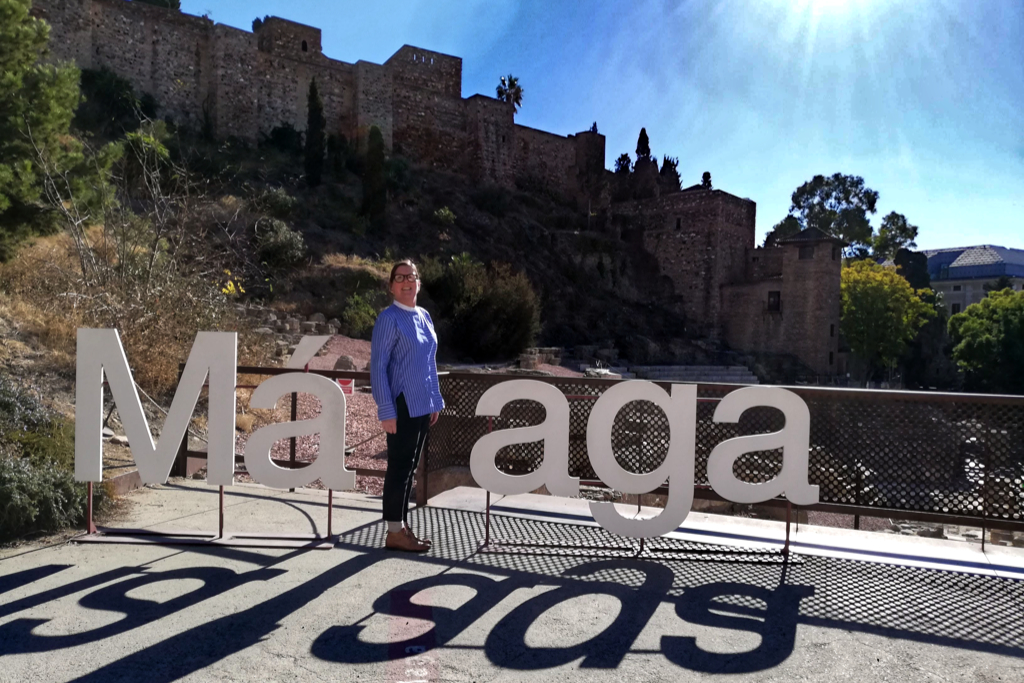



Canary Islands
The Canary Islands are an archipelago in the Atlantic, between about 1,000 and 1,500 kilometers from mainland Spain and between 100 to 500 kilometers off the coast of Morocco. So while the Canaries belong politically to Spain, they are geographically definitely part of Africa.

The Canaries consist of seven main islands with their own regional government. However, there is yet another inhabited island called La Graciosa as well as many small uninhabited rock isles.
Born of Fire
The region owes its formation to volcanism and an underlying hotspot. The volcanic activity continues to this day as the people on the island of La Palma sadly had to endure in 2021.
Due to this activity, there is a large number of bubble caves and lava tubes. Therefore, the ancient Canarians lived in natural caves. A large number of natural and manmade caves are still found in Gran Canaria. On those islands where there weren’t any suitable caves, the Aborigines built houses from stone, obviously. Interestingly, their styles and sizes differ from island to island.
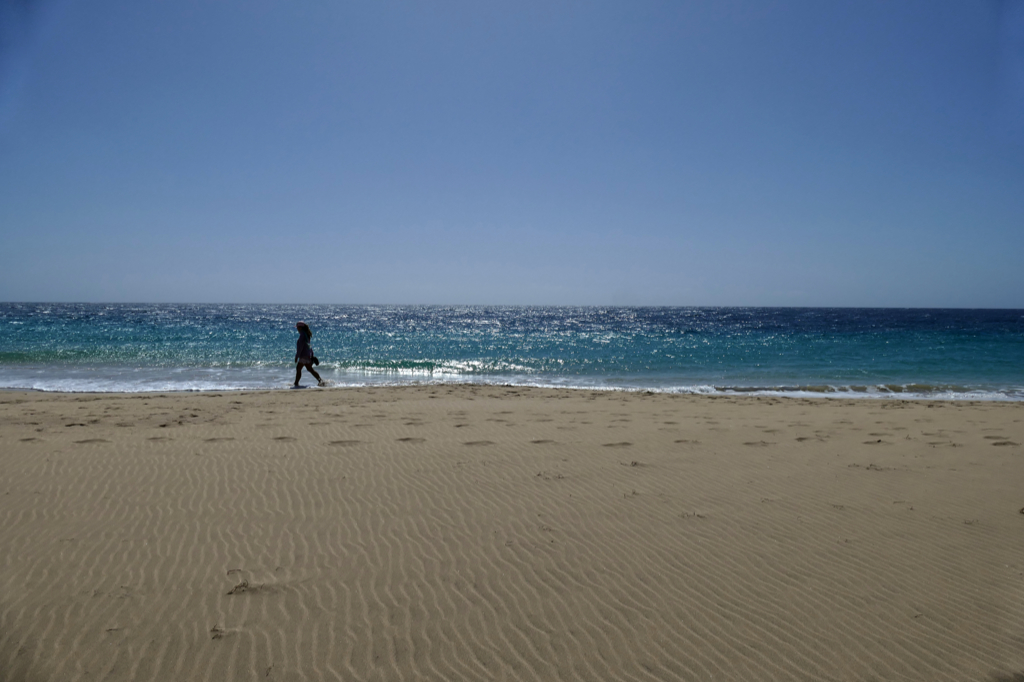
Although the Canary Islands have tons of grand landmarks, a unique culture and a fascinating history to offer, most visitors come for the beaches. Hence, the by far most important industry on the islands is tourism. The main tourist areas are the islands of Tenerife, Gran Canaria, Fuerteventura, and Lanzarote. And by chance, these are also the islands I visited on my recent trip. Therefore, I’m happy to prove to you in my respective guides that all of those places are amazing as soon as you leave the tourist ghettos.
The Islands I Visited in the Canaries


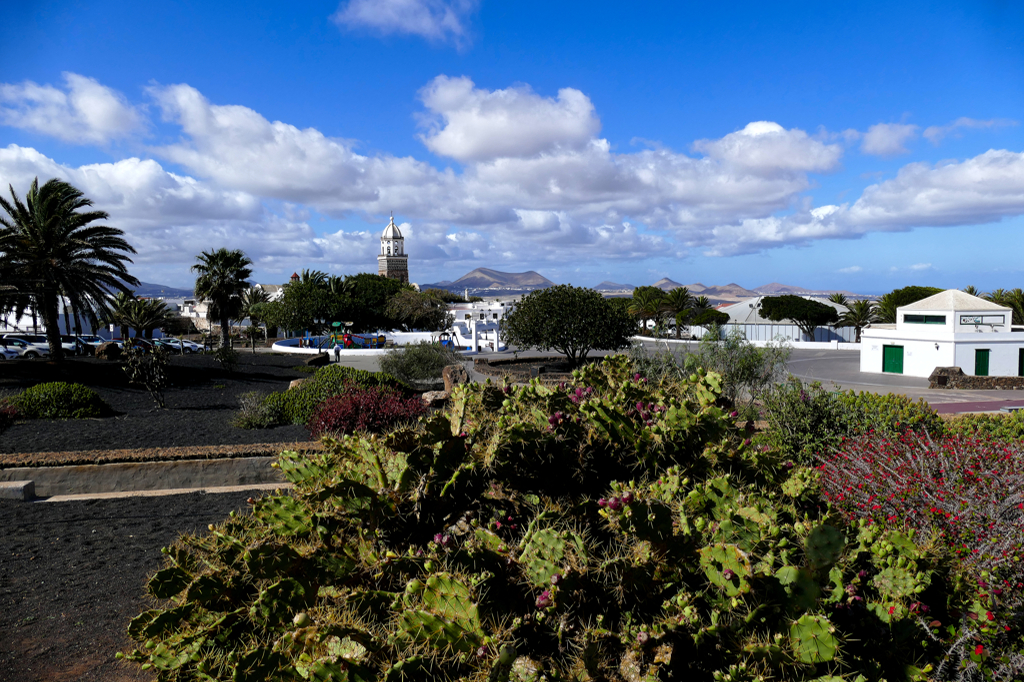
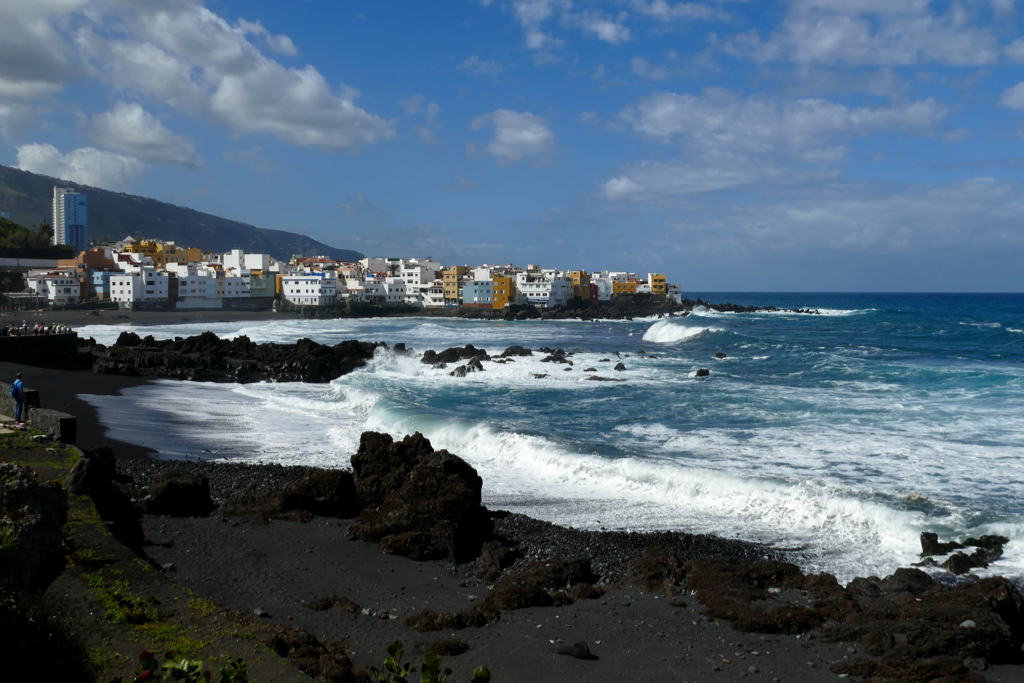

Mallorca
Mallorca is about 170 kilometers off the Spanish mainland. With a coastline of over 550 kilometers, it is the largest of the Balearic Islands. As a matter of fact, it is the largest island belonging to Spain and the seventh-largest Mediterranean island. In one word: It’s large.
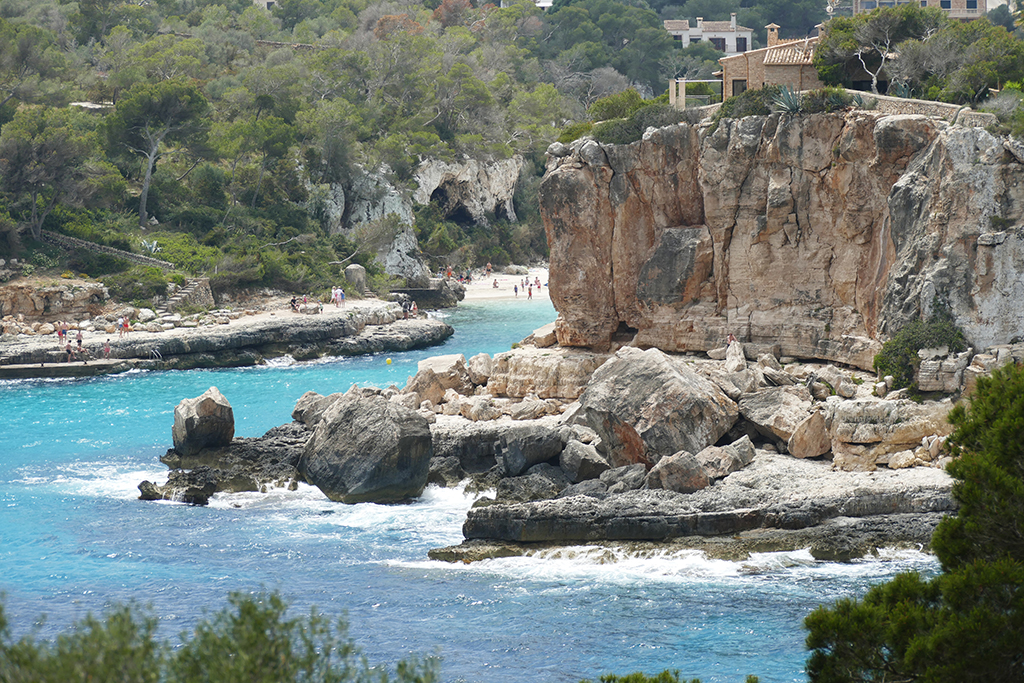
If one year ago you had asked any of my friends which place I would never ever visit, they’d probably said Mallorca. And at that time, they were right.
Why?
Because in Germany, the island of Mallorca is the epitome of tacky mass tourism. Imagine spring break in Daytona or Cancún and you’ll get the picture.
Sadly, most of those party tourists neither know nor care about the island’s culture and heritage.
However, this ghetto-like way of travelling has a big, big advantage for everyone. The party crowds know exactly where to gang together. And the non-party-visitors know for certain which places to avoid.
So to cut a long story short, forget all those ugly clichés. Get over your prejudices and treat yourself to a wonderful trip to Mallorca.
The Places I’ve Visited in Mallorca
Twelve Must-See Places in Mallorca
Read stories and get detailed travel information about the places I’ve visited on the island:
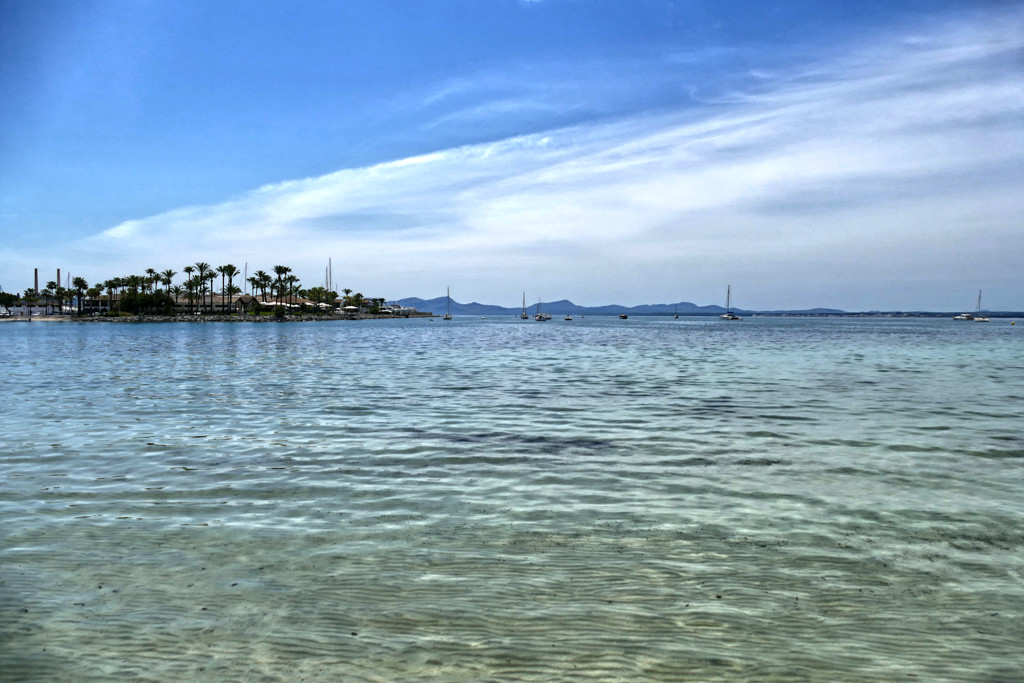

CALA LLOMBARDS
CALA FIGUERA

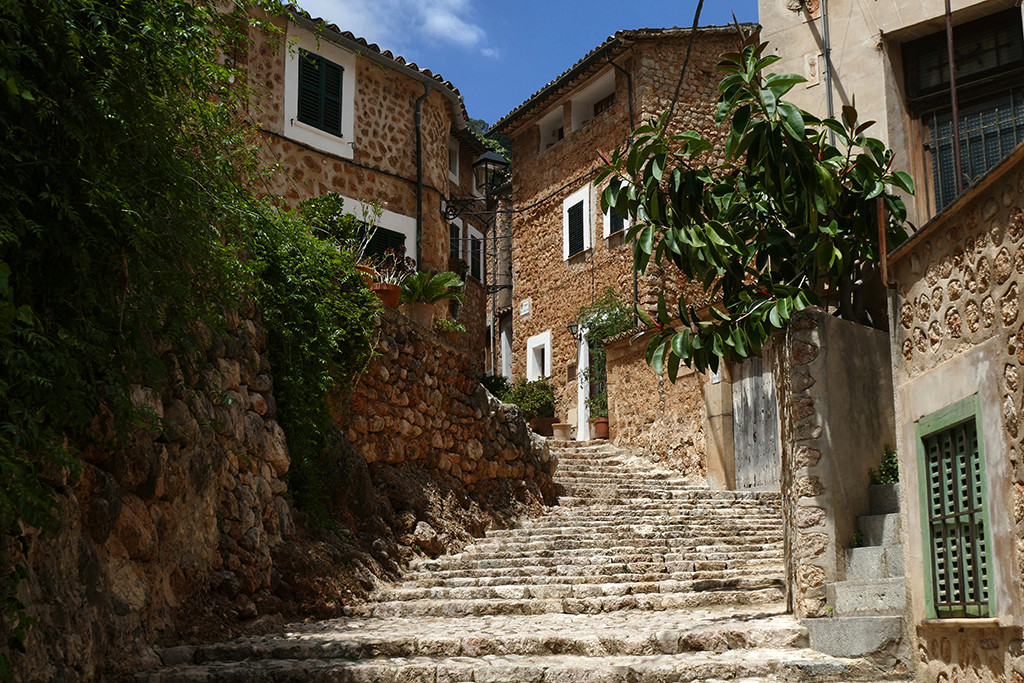
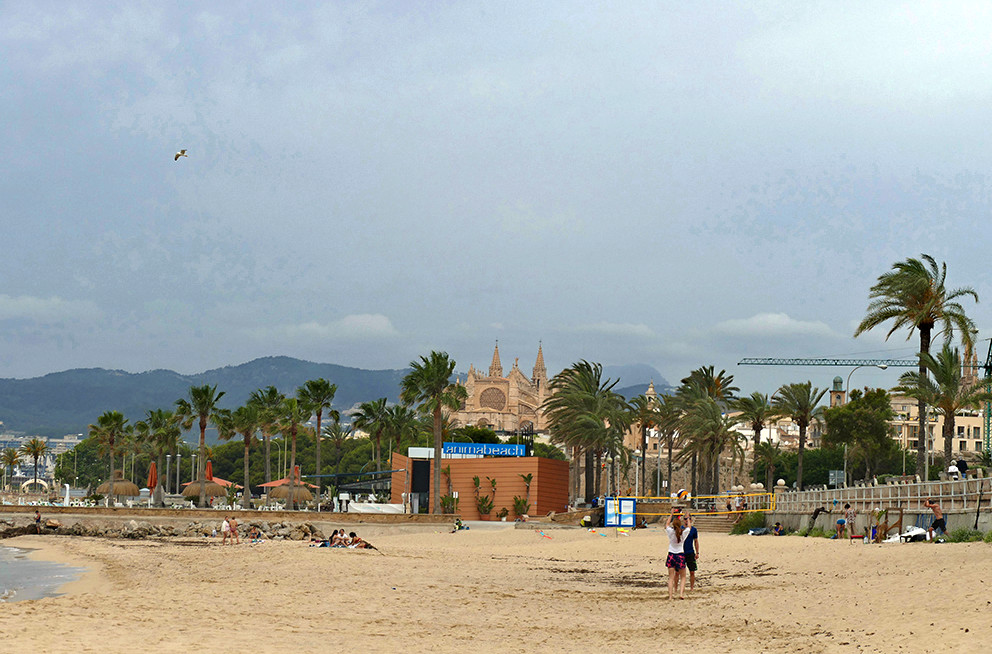
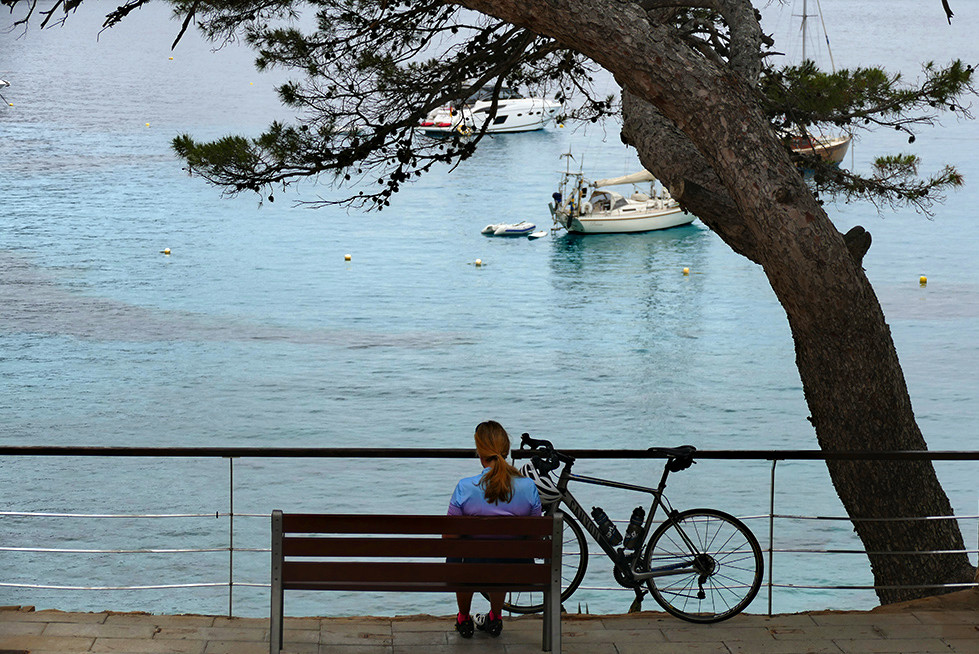
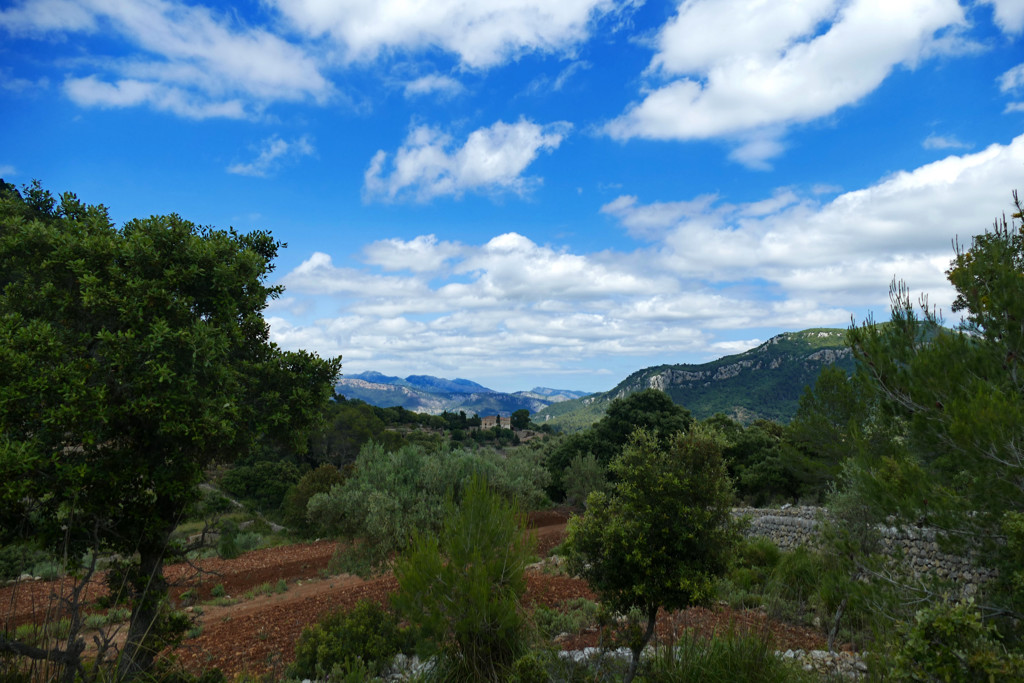
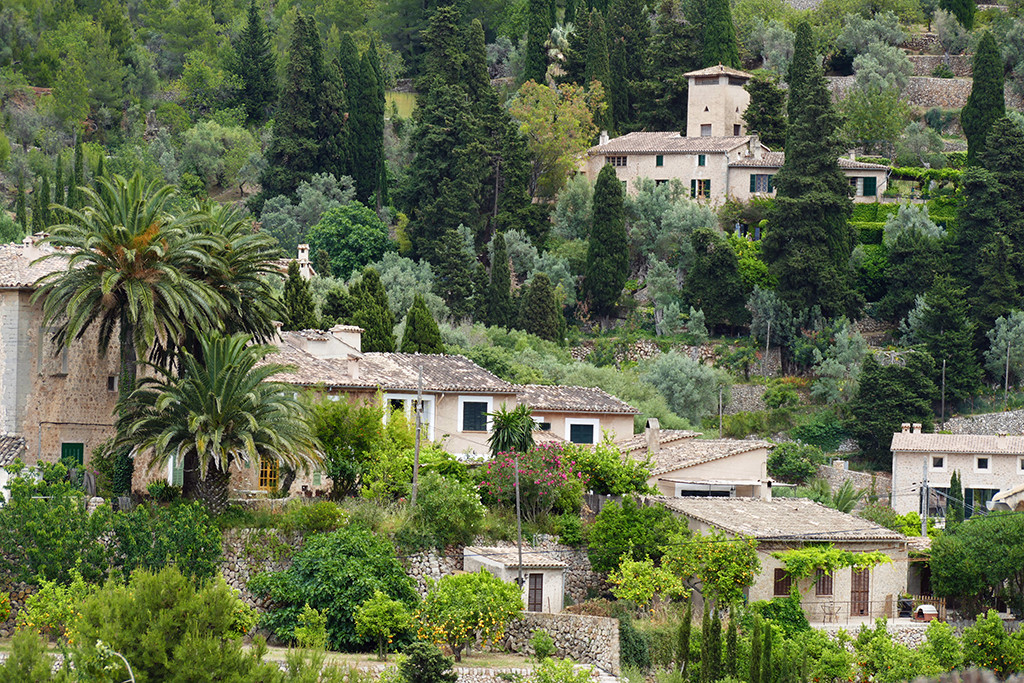
Pinnable Pictures
If you choose to pin this post for later, please use one of these pictures:

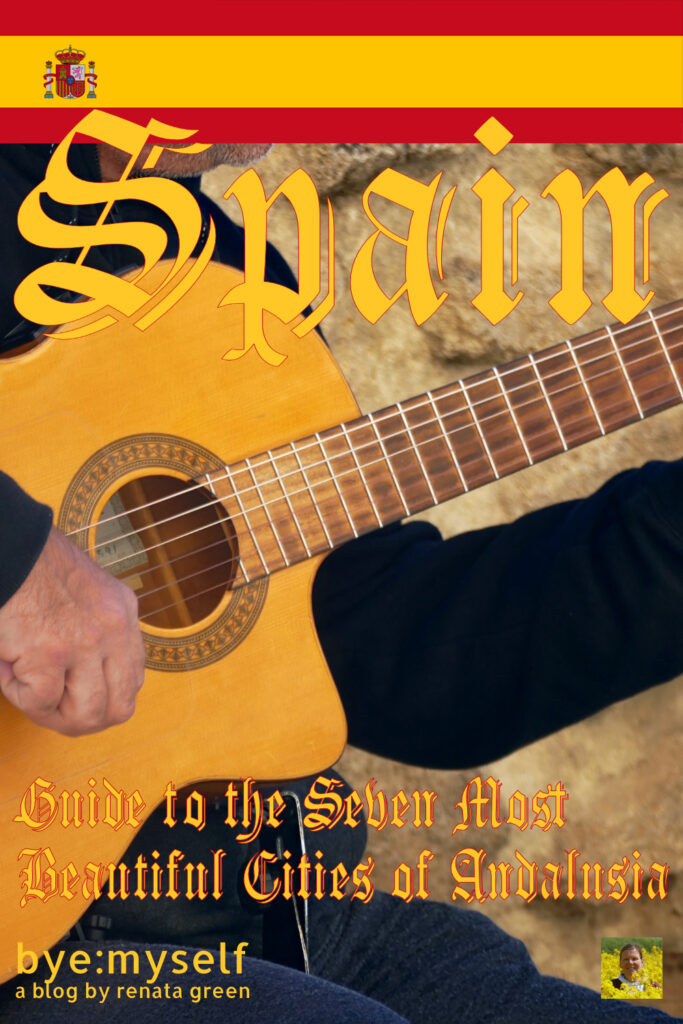
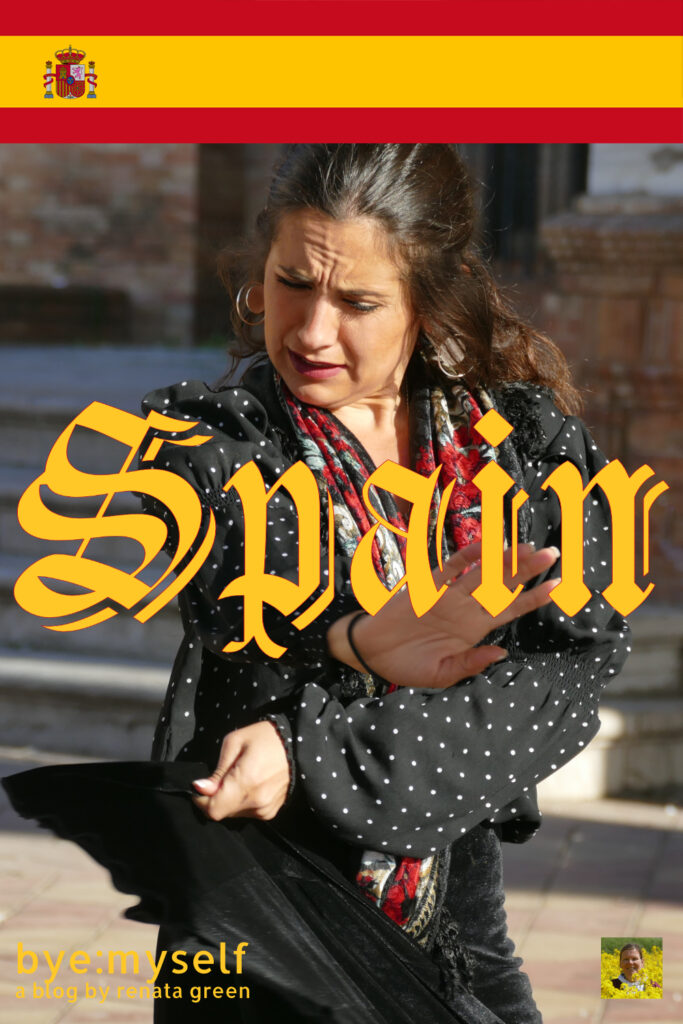


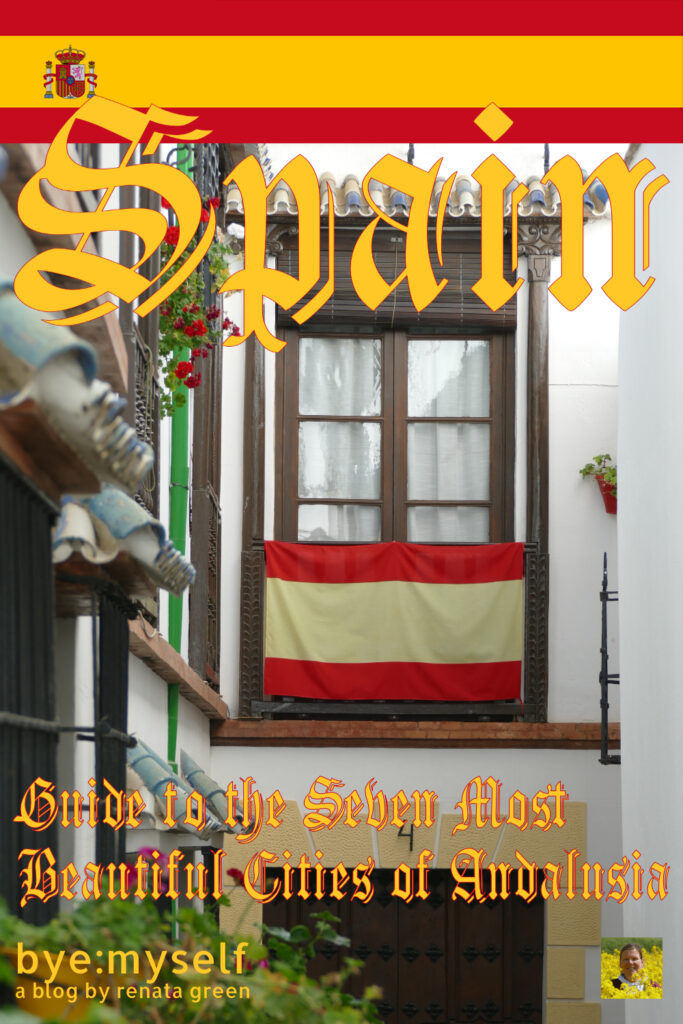
Note: I’m completing, editing, and updating this post regularly – last in April 2024.
Did You Enjoy This Post? Then You Might Like Also These:
From PORT d’ANDRATX to SANT ELM – Hike With a View
Break a Leg – My Bumpy First Encounter With Gran Canaria
LA OLIVA – Fuerteventura Like in Ye Olden Days
From FELANITX to SANT SALVADOR – an Uplifting Day Trip
24 hours in BARCELONA
Guide to RONDA – a White Gem in the Skies
PLAYA de COFETE – thirteen kilometers of paradise
Best STREET ART in PALMA de MALLORCA
* This is an affiliate link. If you book through this page, not only do you get the best deal. I also get a small commission that helps me run this blog. Thank you so much for supporting me!
